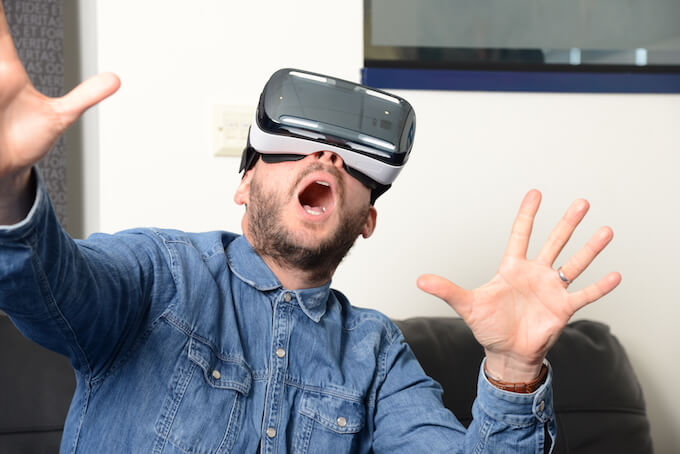Virtual Reality is an amazing technology. The immersive experience you derive out of VR is all about how effectively it tricks your brain. But, how is it possible? How is VR able to make you believe that you are in a spacesuit? Touring around to the International Space Station while you are actually in your room and waving hands like crazy? In this article, we explain how virtual reality headsets work. SO, let’s get started with some basics.
How VR Headsets Are Built To Trick Your Brain?
Currently all the virtual reality headsets in the market require a computer, console or smartphone to run VR content (movies, apps and games). These headsets are either strapped onto your head (called HMDs) or held by your hands at your eyes (like Google Cardboard) and contain a display along with other sensors to track your head, hands, voice or trackpads.
The whole point of VR is building excellent content that produces VR experiences as close to reality as possible. At such high levels of immersion you start to feel these accessories and headgear as parts of body and act as if you are in the real world.
Whether it is a head-mounted display (HMD) like the Oculus Rift or a simple cardboard box with glasses like the Google Cardboard, the primary aim is to create a 3D environment that you can interact with virtually. It is like bringing the content out of your Television and projecting it on a screen with no real boundaries. As you move your head, you can see a completely different part of the same image, which you wouldn’t have on a normal TV screen.
Display Is Gives The VR Experience
This is one of the significant aspect at which virtual reality and augmented reality are different. Usually all these headsets come with a 110 degree field of view as a 360 FOV world be expensive. Also the minimum frame-rate that is expected for a smooth performance is 60Hz, but the current high-end models are way beyond this with Rift, Vive and PSVR at 90,110,120Hz.
Virtual Environments are developed and run in computers and gaming consoles. Virtual Reality Modeling Language (VRML) is used to model objects and interactions with these objects. Graphic cards play a key role in running these powerful software.
This VR content is transferred from the PC or console to the VR headset using a HDMI cable. This is the case with the Oculus Rift, HTC Vive and Sony’s PlayStation VR. In devices like the Google DayDream and Samsung Gear VR there is a slot for mobiles and the VR content you consume is directly from them.
Similar to 3D glasses, VR Headsets show two feeds on the same display or two different LCD displays each for one eye. Users can also adjust the lenses present between their eyes and the pixels. Due to this the user can perceive depth information giving the illusion of a digital world. This is technically called stereoscopy. You can read more about stereoscopic videos and monoscopic videos from our previous post.
Tracking Systems In VR Headsets
Many of these headsets contain tracking systems. These are specifically required to maps the user’s movements and adjust display accordingly. The tracking system ensures that each time the user moves his head, or walks or performs some other action, the scene changes accordingly by constantly communicating with the computer.
The tracking system constitutes of three main tasks. These are:
- Head Tracking
- Motion Tracking
- Eye Tracking
Any delay or latency in tracking movements will cause a disconnection to the user from the virtual world. This is the main cause for disruptions in experience and in some cases causes user feelings of virtual nausea and motion sickness.
Image Credits: Gigaom, Howitworksdaily



